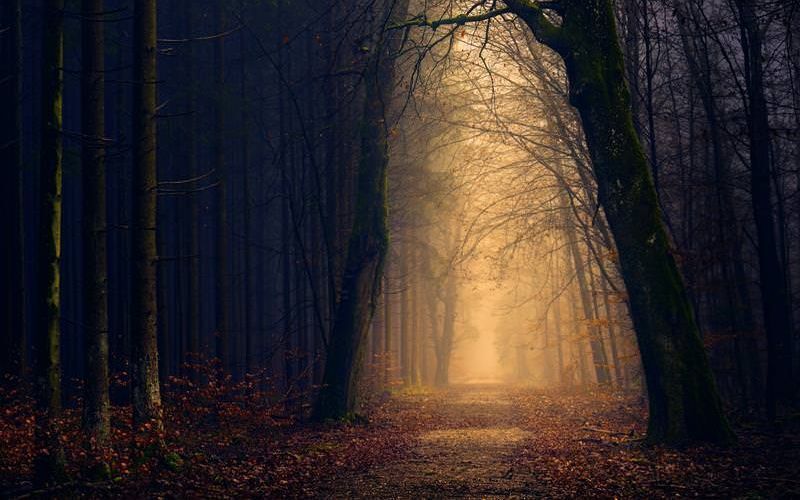Photo by Johannes Plenio on Unsplash
This annotated bibliography on children's books that show the relationship of compassion and nature was adapted from the work of Ariel Gray, South Burlington, VT, USA schools.
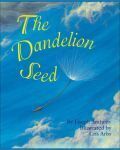
Anthony, Joseph. The Dandelion Seed. (Dawn Publications, 2013).
A dandelion can teach much about seeds and seasons and cycles, and the big world that a wind-blown seed can travel, but it also can make us appreciate the challenges it must overcome. This gorgeous book is at once simple and profound. You may be surprised and pleased by the questions and observations of your children after reading this together.
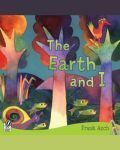
Asch, Frank. The Earth and I. (HMH Books for Young Readers; Reprint edition, 2008).
This story celebrates friendship that one child has with the Earth. They play together, listen to each other, and nourish each other. But when the Earth is sad, the child is sad--so he finds a way to make his friend, the Earth, happy.

Barbey, Beatrice. Meow Said the Mouse. (Plum Blossom Books, 2005).
Inspired by a grandmother's bedtime story and the teachings of Thich Nhat Hanh, Meow Said the Mouse is a delightful and whimsical tale of a mouse that turns into a cat. Instead of being afraid, the mouse learns to appreciate her new appearance and realizes that she is a part of everything else on earth. Told as an endless loop (the end of the story becomes the beginning again), the story serves as a metaphor for change, and presents an original example of the Buddhist idea of interdependence.
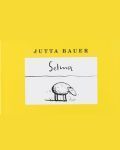
Bauer, Jutta. Selma. (Kane/Miller Book Pub; Tra edition, 2003).
A little book about a very big question: What is happiness?For Selma the sheep, the answer is easy. Happiness is eating grass, playing with her children, exercising, eating a little more grass, chatting with her neighbor, and a good night sleep. But what if Selma had more time? What if she won the lottery?
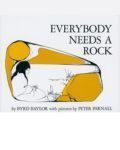
Baylor, Byrd. Everybody Needs a Rock. (Atheneum Books for Young Readers; Reprint edition, 2011).
Everybody needs a rock -- at least that's the way this particular rock hound feels about it in presenting her own highly individualistic rules for finding just the right rock for you.
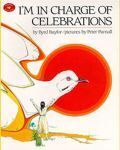
Baylor, Byrd. I’m in Charge of Celebrations. (Atheneum Books for Young Readers; Reprint edition, 2014).
Byrd Baylor's text captures and shares some of the special experiences in the Southwest desert country that have inaugurated her private celebrations: The Time of Falling Stars, in the middle of August, when "every time a streak of light goes shooting through the darkness, I feel my heart shoot out of me"; Rainbow Celebration Day, marking the time she and a jackrabbit stood together watching a triple-rainbow over a canyon; and the real New Year's Day (January first is "just another winter day"), the day spring begins. "I celebrate with horned toads and ravens and lizards and quail...And, Friend, it's not a bad party."
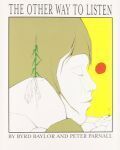
Baylor, Byrd. The Other Way to Listen. (Atheneum Books for Young Readers; Reprint edition, 2014).
When you know "the other way to listen," you can hear wildflower seeds burst open, you can hear the rocks murmuring, and the hills singing, and it seems like the most natural thing in the world.
Of course it takes a lot of practice, and you can't be in a hurry...
In fact, most people never hear those things at all, but this book tells you about two people who did -- one who was very good at it and one who took a long time learning.
As in their other books, Byrd Baylor and Peter Parnall bring us close to the essence of the natural world. Thanks to their unique talents, their books are for us the experience about which they write and draw.

Baylor, Byrd. The Way to Start a Day. (Atheneum Books for Young Readers; Reprint edition, 2014).
Beautiful paintings highlight a text depicting the ways various peoples from around the world welcome the sun and the start of a new day.
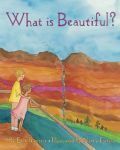
Boritzer, Etan. What is Beautiful? (Veronica Lane Media, 2012).
What Is Beautiful? is the fourth title in Etan Boritzer's best selling What is? series of Life Concepts books. What is Beautiful? explores the underlying ideas of what constitutes true beauty in a person. Parents and teachers will welcome the bookís message of genuine self-esteem as the antidote to peer pressures inside and outside school. Etan Boritzer conveys a deep understanding of inner values to children as opposed to media and social hypes. The book is a useful tool that encourages our children to consider what makes a person truly beautiful qualities such as tolerance, generosity, bravery and peacefulness and thereby helps to give the reader a sense of real identity and inner worth.
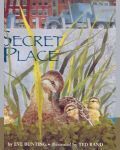
Bunting, Eve. Secret Place. (Clarion Books; Library Binding edition, 1996).
A small boy finds a secret place in the city that he shares with a white egret, mallards, and even ducklings.

Cooper, Ilene. The Golden Rule. (Harry N. Abrams; First Edition edition, 2007).
Everyone knows a version of the Golden Rule. But what does it really mean? And how do you follow it? In this gorgeously illustrated book, a grandfather explains to his grandson that the Golden Rule means you “treat people the way you would like to be treated. It’s golden because it’s so valuable, and a way of living your life that’s so simple, it shines.” And though it may be a simple rule, it isn’t easy to follow. Fortunately, following the Golden Rule is something everyone can do, which means that every person—old or young, rich or poor—can be a part of making the world a better place.

Dharma Publishing. A Wise Ape Teaches kindness. (Dharma Publishing; 2nd Edition edition, 2013).
A great ape, living in the deep forest, is always ready to help other creatures. One day he discovers a farmer trapped in a ravine. The ape rescues the man by carrying him on his back up the steep walls of the pit. Afterward, when the ape is resting, the farmer tries to kill him. Instead of taking revenge, the wise ape demonstrates compassion for the man.

Dharma Publishing. The Value of Friends. (Dharma Publishing; 2nd Edition edition, 2014).
Following his wife's advice, a hawk makes friends with a lion, an osprey, and a great tortoise. Later, when hunters discover the hawks' nest and seek to capture their young, each of the friends responds in turn to save the little birds.

Emberley, Barbara & Ed. Night’s Nice. (Little, Brown Books for Young Readers; Library Binding edition, 2008).
Hop into bed,
Turn over thrice,
And whisper this softly:
Night's nice, night's nice, night's nice.
Good Night.
NIGHT'S NICE will lull little ones to sleep with its soothing, sing-song text and picturesque, stunning nightscapes throughout.
From moonlit treetops and city street lamps to luminous fireworks on the 4th of July, Ed's watercolor illustrations poignantly capture the beauty of nighttime in this reissue of his classic children's story.
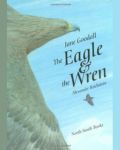
Goodall, Jane. The Eagle & the Wren. (North-South Books, 2002).
Lark, dove, eagle, and vulture all claim to soar the highest. So owl suggests a contest, and off the birds soar. It appears eagle is the winner, but a tiny passenger on his wing may change the outcome. Full color.

Johnson, D.B. Henry Builds A Cabin. (Houghton Mifflin Harcourt, 2002).
How big does a home really need to be? When Henry decides to build a cabin for himself in the woods, he gets some help and a lot of advice from his friends. But Henry, being Henry, has his own ideas, and he sets about building his house as a bird builds its nest. As he adds everything he thinks his cabin needs, Henry’s new home ends up being a lot bigger than it looks!
Inspired by the life of Henry David Thoreau, and illustrated with nature-filled paintings by author and artist D. B. Johnson, Henry Builds a Cabin is a thoughtful and beautiful meditation on what a home can be.
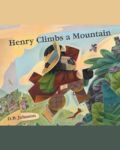
Johnson, D.B. Henry Climbs A Mountain. (Houghton Mifflin Harcourt, 2003).
Henry wants to climb a mountain, and nothing is going to stop him. Then Sam, the tax collector, puts him in jail for not paying his taxes. Henry refuses to pay to a state that allows slavery. But being locked up doesn’t stop Henry. He still gets to splash in rivers, swing from trees, and meet a stranger. This bear, modeled on the real Henry David Thoreau, roams free.
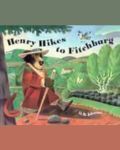
Johnson, D.B. Henry Hikes to Fitchburg. (Houghton Mifflin Harcourt; Reprint edition, 2006).
Inspired by a passage from Henry David Thoreau’s Walden, the wonderfully appealing Henry Hikes to Fitchburg follows two friends who have very different approaches to life. When the two agree to meet one evening in Fitchburg, which is thirty miles away, each decides to get there in his own way, and the two have surprisingly different days.
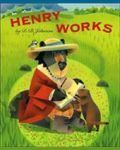
Johnson, D.B. Henry Works. (Houghton Mifflin Harcourt, 2004).
Without Henry, wildflowers would go unwatered in dry weather and rivers would have no crossing stones. Without him, who would bring news of coming storms?
Henry works, but no one seems to notice.
“You’re not doing anything today,” his friend says. “Come fishing with me.” “Not today,” says Henry as he digs up a healing plant for a neighbor. Though he never gets paid, Henry works for more than money.
In this fourth book about Henry David Thoreau, D. B. Johnson’s quiet story flows through morning’s mist to evening’s glow, when, at last, Henry’s most important work is revealed!

Joosse, Barbara. In the Night Garden. (Henry Holt and Co. (BYR); First Edition edition, 2008).
Late one evening, three little girls prowl, growl, and let their imaginations soar.
One is a bear with sharp, white teeth;
One is a whale, steady and strong;
One is a sled dog, sleek and lean.
Barbara Joosse’s exciting nighttime tale is perfectly enhanced by Elizabeth Sayles’s full-color illustrations.
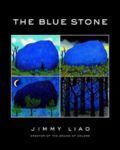
Liao, Jimmy. The Blue Stone: a journey through life. (Little, Brown Books for Young Readers; 1 edition, 2008).
From internationally renowned author and illustrator Jimmy Liao comes a new enchanting and evocative journey. Breathtaking illustrations and a haunting story take readers on a wondrous voyage around the world.
A large, beautiful blue stone is discovered in a forest. It is cut in half, and one half stays in the forest while the other starts on a long and mystical journey through many places, many owners, and many transformations. It begins as a statue of an elephant, admired by museum goers, and then becomes a carved bird residing in an elderly woman's garden. It becomes a moon, a cat, a necklace, and more, until it finally returns to the forest. The Blue Stone is a powerful tale of different life paths and possibilities, a longing for home, and love.
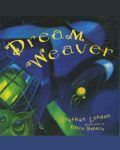
London, Jonathon. Dream Weaver. (HMH Books for Young Readers; 1st edition, 1998).
Silently, a tiny yellow spider spins her fragile web. As a young boy stops to watch, she crawls along the delicate silken threads, sometimes hanging, sometimes spinning, sometimes staring back. Before the boy knows it, the spider’s world has become his own...
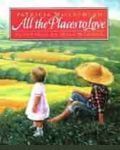
MacLachlan, Patricia. All the Places to Love. (HarperCollins; 1st edition, 1994).
Within the sanctuary of a loving family, baby Eli is born and, as he grows, "learns to cherish the people and places around him, eventualy passing on what he has discovered to his new baby sister, Sylvie: 'All the places to love are here . . . no matter where you may live.' This loving book will be something to treasure."'BL."The quiet narrative is so intensely felt it commands attention. . . . a lyrical celebration."'K.
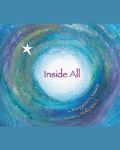
Mason, Margaret. Inside All. (Dawn Pubns, 2008).
This is a comforting bedtime book that will reassure little ones that they--every one of them--are connected to the world both physically and mystically. They belong, and are part of something meaningful. The story is a simple nesting-doll-like journey. With a few well-chosen words and rich suggestive illustrations, the reader is taken from the outer edges of the universe to a planet, a village, a home, a room, into the heart of a warm, sleepy child, and finally to an awareness of love that somehow encompasses it all. We each have our place inside the All, and the All has its place inside each of us. This little book succeeds in bringing the idea of interconnectedness and universality to a level young children can understand.

Muth, Jon. The Three Questions. (Scholastic Press; 1st edition, 2002).
With his stunning watercolors -- and text that resounds with universal truths, award-winning artist Jon J Muth has transformed a story by Tolstoy into a timeless fable for young readers.
What is the best time to do things? Who is the most important one? What is the right thing to do? Nikolai knows that he wants to be the best person he can be, but often he is unsure if he is doing the right thing. So he goes to ask Leo, the wise turtle. When he arrives, the turtle is struggling to dig in his garden, and Nikolai rushes to help him. As he finishes work, a violent storm rolls in. Nikolai runs for Leo's cottage, but on his way, he hears cries for help from an injured panda. Nikolai brings her in from the cold, and then rushes back outside to rescue her baby too.
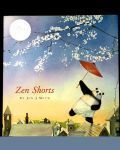
Muth, Jon. Zen Shorts. (Scholastic Press, 2005).
"Michael," said Karl. "There's a really big bear in the backyard." This is how three children meet Stillwater, a giant panda who moves into the neighborhood and tells amazing tales. To Addy he tells a story about the value of material goods. To Michael he pushes the boundaries of good and bad. And to Karl he demonstrates what it means to hold on to frustration. With graceful art and simple stories that are filled with love and enlightenment, Jon Muth -- and Stillwater the bear -- present three ancient Zen tales that are sure to strike a chord in everyone they touch.
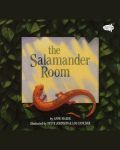
Mazer, Anne. The Salamander Room. (Dragonfly Books; 1st Dragonfly Books Ed edition, 1994).
A boy finds a salamander in the woods and imagines the many things he can do to turn his room into a perfect salamander home. Together, Anne Mazer and Steve Johnson have created a woodland paradise that any salamander would love to share with a child.

Nash, Marti. There is A Tree. (Blue Barn Books; 1st edition, 2007).
This is a story of an adventurous child's solitary day of discovery in the woods. She sits quiet as a mouse, high in a special tree, to watch what passes by above, below, and all around. We feel the immediacy of life in that world, from the brush of a robin's wing to the glow of the setting sun; and are also reminded of our own childhood's love for secret places and uncharted realms. The story is told in simple prose that meanders around colorful woodcut illustrations.

Paulsen, Gary. The Tortilla Factory. (Hampton Brown Co Inc; Teacher's Edition edition, 2001).
In a lyrical tribute to the Mexican farm worker, award-winning author Gary Paulsen pays homage to a cycle of life--from seed to plant to tortilla. With Ruth Wright Paulsen's expressive paintings, the story brings forth the poetry and beauty of a simple way of life. Full color.

Parr, Todd. The Peace Book. (Little, Brown Books for Young Readers, 2010)
Describes peace as making new friends, sharing a meal, feeling good about yourself, and more.
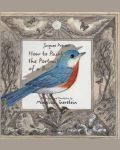
Prevert, Jaques. & Gersteub, Mordicai. How to Paint the Portrait of a Bird. (Roaring Brook Press; Tra edition, 2007)
A child wakes up, puts up an easel, picks up a brush and paints--paints a perch, a tree, the warmth of the sun and the sound of the summer breeze, and eventually a bird comes and sings. This is both the most personal and the most universal of books from Caldecott Medal winner Mordicai Gerstin: a fable about art, wonder, and creativity that has a meaning and a message for every reader. Universal appeal and illustration rich in warmth, color and feeling make this jewel of a picture book a lovely choice for the gift-giving season.

Rylant, Cynthia. & McClure, Nikki. All in a Day. (Harry N. Abrams; Library Binding edition, 2009).
This lovely book illuminates all the possibilities a day offers—the opportunities and chances that won’t ever come again—and also delivers a gentle message of good stewardship of our planet. Newbery Medal winner Cynthia Rylant’s poetic text, alongside Nikki McClure’s stunning, meticulously crafted cut-paper art, makes this picture book not only timeless but appealing to all ages, from one to one hundred.

Susan, Sister. The Sun in my Belly. (Plum Blossom Books, 2007).
On an early morning on a cloudy day, Jenny and her friend Molly play ball in a meadow. Somehow they begin to fight over the ball, and Molly storms off. Both are unhappy in their separate worlds, but Jenny looks up and suddenly feels happy as the sun breaks through. Soon Molly returns and the friends forgive each other, strolling through the meadow to observe nature’s beauty — a beauty that they see in themselves too. Sister Susan’s sensitive text introduces young readers to the Buddhist idea of “Interbeing” — that everything is connected. Sister Rain’s simple, colorful illustrations bring Jenny's and Molly’s new world to life.

Tillman, Nancy. & Metaxas, Eric. It’s Time to Sleep, My Love. (Feiwel & Friends, 2013).
It's time to sleep, it's time to sleep,
the fishes croon in waters deep.
The songbirds sing in trees above,
"It's time to sleep, my love, my love."
As children prepare for bed, the world around them is also settling down for the night. Animals who live in the jungle, the forest, the sea—all whisper to their babies a soft refrain: It’s time to sleep, my love.
As comforting as a soft blanket and warm as a goodnight hug, Eric Metaxas's lullaby is lovingly brought to life by bestselling artist Nancy Tillman (On the Night You Were Born) , whose illustrations celebrate the wonders of the natural world, and the bonds of family. It's Time to Sleep, My Love is a 2009 Bank Street - Best Children's Book of the Year.
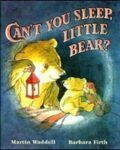
Waddell, Martin. Can’t You Sleep, Little Bear? (Candlewick; Reprint edition,1994).
"I don't like the dark," said Little Bear.
"What dark?" said Big Bear.
"The dark all around us," said Little Bear.
In this tender account of a sleepless night in the bear cave, Big Bear sets out with all his patience and understanding to show Little Bear that the dark is nothing to be afraid of. When all the lanterns in the cave aren't enough to quell Little Bear's troubled emotions, Big Bear offers—in a final loving gesture—nothing less than the bright yellow moon and the twinkling stars! More comforting than even the best of lullabies, this bedtime story is destined to become a classic.
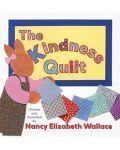
Wallace, Nancy. The Kindness Quilt. (Two Lions, 2013).
Random acts of kindness pictured on a paper quilt
Minna and her classmates have been asked by their teacher, Mrs. Bloom, to work on a Kindness Project. Mrs. Bloom wants them to do and draw and share an act of kindness. Minna and her family do lots of kind things, but Minna can’t decide which one is right for her project. Then she starts writing and drawing and cutting—and an idea for a paper quilt picturing many acts of kindness begins to take shape!Important lessons about being kind to each other are depicted in NANCY ELIZABETH WALLACE’s charming artwork using origami, recycled paper, markers, crayons, and colored pencils.
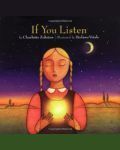
Zolotow, Charlotte. If You Listen. (Running Press Kids, 2002).
This loving tale about loss from two-time Caldecott Honor winner Charlotte Zolotow is a gentle, reassuring approach to a subject that's always challenging for parents to discuss with children. In it, a mother comforts her daughter about the absence of the child's father by explaining that if she listens hard, she'll feel him far away sending love to her. Our new edition of this timeless story is accompanied by stunning artwork by award-winning illustrator Stefano Vitale.
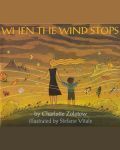
Zolotow, Charlotte. When the Wind Stops. (HarperCollins; Reprint edition, 1997).
Where does the wind go when it stops?When a little boy asks this question at the end of a happy day, his mother explains that the wind does not stop-it blows away to make the trees dance somewhere else.Reassuringly, she tells him that nothing ever ends, it simply begins in another place or in another way. Rain goes back into the clouds to create new storms, waves fold back upon the sea to become new waves, and the day moves on to make way for the night, bringing the darkness and stars for the little boy to dream in.Charlotte Zolotow's lyrical prose and Stefano Vitale's rich illustrations make this a beautiful celebration of the cycle of life.

